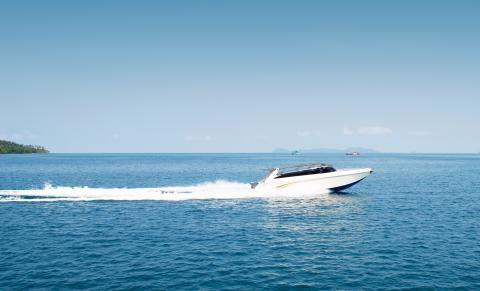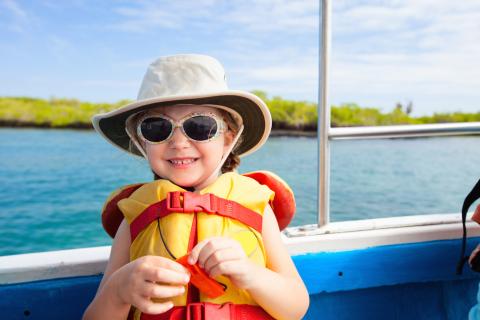Safe Boating
Marine carbon monoxide detector
In the right conditions, carbon monoxide exhaust from a boat’s engine and generator can vent into the cabin, cockpit, and bridge and poison those aboard. This video outlines how carbon monoxide poisoning is especially a danger when boats are idling or traveling at slow speeds. To protect yourself and your family from carbon monoxide, follow these safety tips:
- Make sure you have a working marine carbon monoxide detector. Home detectors aren’t designed to work in a marine environment, so be sure to find a detector that is specifically for marine use. You can buy a marine detector from boating supply stores for $60-$150. Owners can install battery-powered detectors, but marine technicians should install any hard-wired detectors. Like home detectors, marine detectors should be replaced every five years or according to manufacturer instructions. We highly recommend detectors for all fuel-burning boats with enclosed spaces that can be occupied by a person. Boat owners should strongly consider a detector for other boats with fuel-burning engines, even if they don’t have enclosed spaces.
- Ensure all fuel-burning engines and appliances are properly installed and maintained. The U.S. Coast Guard has a helpful checklist for inspecting your boat for exhaust-related problems.
- Swim and play away from areas where engines vent their exhaust.
- Never block exhaust outlets. Blocked outlets can cause carbon monoxide to build up in cabin and cockpit areas.
- Limit the time your boat idles or runs at slow speeds.
- Dock, beach, or anchor your boat at least 20 feet away from the nearest boat. Exhaust from nearby boats can build up near your boat’s cabin and cockpit.
- Know the symptoms of carbon monoxide poisoning and take action if you see them. Carbon monoxide can’t be seen or smelled, and at high levels, it can cause death within minutes. Symptoms of overexposure to carbon monoxide include headache, fatigue, dizziness, shortness of breath, nausea, and confusion. Keep in mind that carbon monoxide poisoning can seem like seasickness or alcohol intoxication. If you think you may be experiencing carbon monoxide poisoning, or your detector sounds an alarm, move to fresh air and call 911.
Wisconsin residents who boat in Minnesota waters should also be aware of Sofia’s Law, which went into effect on May 1, 2018. This law requires certain types of boats to display carbon monoxide warning stickers and/or be equipped with a marine carbon monoxide detector. Any boats used in Minnesota waters must comply with Sofia’s Law. Learn more about the requirements on the Sophia’s Law webpage.
These tips are all included in our Staying Safe from Carbon Monoxide While Boating, P-02211, fact sheet.
Life jackets
A number of water safety laws were passed to improve the use of life jackets and prevent drowning:
- Children 13 years old and younger must wear a life jacket that fits them on moving boats on coastal waters.
- Recreational boats must carry one U.S. Coast Guard-approved life jacket for each person aboard.
- The life jacket must be available and accessible. This is a nationwide Coast Guard rule.
More information on personal flotation devices is available from the U.S. Coast Guard.
More information
- Boat Safety Tips - Wisconsin Department of Natural Resources
- Prevent Carbon Monoxide Poisoning on your Boat - Centers for Disease Control and Prevention
- Carbon Monoxide - Wisconsin Department of Health Services
- Life Jackets - U.S. Coast Guard
- Water Homepage - Wisconsin Department of Health Services
- Environmental Health Homepage - Wisconsin Department of Health Services


